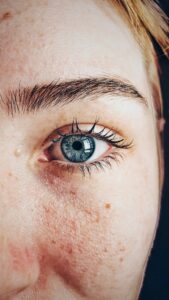Lazy eye in children

Amblyopia, commonly known as “lazy eye”, is one of the most common eye disorders in children. It occurs when one (or possibly both) of the eyes are not properly aligned with the brain.
The term “lazy eye” derives from the impression that one eye is weaker than the other. This is an involuntary action and has nothing to do with actual “laziness”.
If a person with amblyopia does not receive treatment, the brain will continue to rely on the stronger eye, and the weaker one’s vision will gradually get worse.
Symptoms
Lazy eye does not always cause symptoms and is often first diagnosed during an eye test. For this reason, parents are recommended to take their little ones for an eye exam between the ages of three and five. Nevertheless, typical symptoms include:
- Shutting one eye or squinting when looking at things
- An eye that wanders inward or outward
- Eyes pointing in different directions
- Poor depth perception (difficulty catching or throwing)
- Not being able to follow an object with your eyes
- Tilting your head when looking at something
- Having tired eyes and rubbing your eyes a lot
- Headaches
- Tripping or falling over a lot
- Blinking a lot
Causes
The brain interprets information gathered by the eyes to provide us with a coherent vision. In many instances, problems with vision are not exactly due to the eye as much to a miscommunication between the brain and the eye. This is the case with lazy eye, which occurs due to alterations in the nerve pathways between the retina and the brain. The brain starts to ignore this weaker eye and become more reliant on the other one. Eventually, the weaker eye’s ability to function deteriorates.
The main causes of lazy eye are:
- Muscle imbalance (strabismus): This is the most common cause. The muscular disparity causes the eyes to cross in or turn out, thus preventing them from working in sync.
- Refractive problems: A significant difference between the prescriptions in each eye, such as farsightedness, nearsightedness, or astigmatism.
- Deprivation (e.g. cataracts). A problem with the lens that produces patches of dark or cloudy vision makes.
Risk factors
While some babies are born with this eye defect, oftentimes children develop this pathology. Risk factors include:
- Premature birth
- Small size at birth
- Family history of lazy eye
- Other developmental disabilities
Treatment
Because the connections between the eye and brain form during childhood, it is best to treat lazy eye as soon as possible. Treatment options depend on the cause and severity of lazy eye. A doctor might recommend:
- Corrective eyewear. Glasses or contact lenses can correct problems such as nearsightedness, farsightedness or astigmatism that result in lazy eye.
- Eye patches. An eye patch is worn over the eye with better vision for two to six or more hours a day. This helps the weaker eye to gain functionality.
- Bangerter filter. This works like the eye patch. A blurry filter is placed on the eyeglass lens of the stronger eye, thus helping to stimulate the weaker eye.
- Eyedrops. An eyedrop of a medication called atropine can temporarily blur vision in the stronger eye.
- Surgery. Your child might need surgery if he or she has droopy eyelids, cataracts, or other treatments have failed to correct the eyes from crossing or wandering apart.




